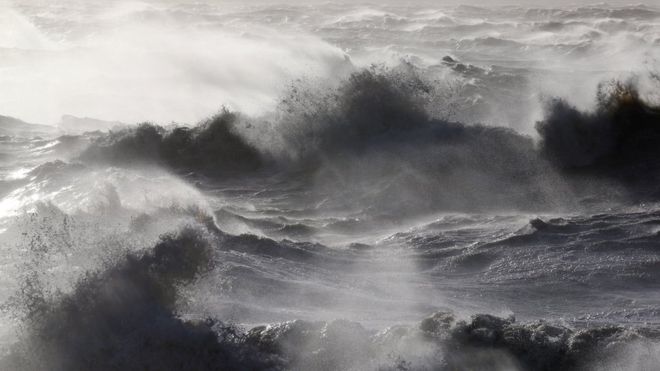If you’ve ever struggled to walk across the deck of a boat as it rolls in a choppy sea, or tried to stand up against breaking waves at the beach, you’ll have felt the might of the ocean.
It feels like there’s a lot of power there too, so getting energy from the waves of the sea sounds as if it’s got real potential. For World Service listener Michael McFarlane, it’s a question that’s been on his mind for years.
“I live in Jamaica and we are never very far from the sea… Electricity generation [here] is mainly based on fossil fuels,” he says.
So why isn’t the ocean powering Michael’s home yet?
In order to tackle this question for the World Service programme Crowdscience, first, there was a language problem to unpick.
Deborah Greaves, Professor in Ocean Engineering and Director of the COAST Laboratory at the UK’s Plymouth University explains: “We’ve tended to use “marine renewable energy” to describe wave and tidal energy…[it’s] energy which can be extracted from the movement of the oceans in the marine environment.”
Large tidal power generators already exist in selected locations around the world – the La Rance River estuary plant in Brittany, France, opened in 1966, and the world’s current largest tidal power station is at Sihwa Lake in Gyeonggi Province, South Korea, costing 313.5 billion South Korean won (£212 million GBP or $263 million USD).
Expense is one factor that currently limits the worldwide number of tidal power plants. Environmental concerns are another, as some places with particularly strong tides are also sensitive ecosystems, such as estuaries.
And there’s one more detail that’s particularly relevant for listener Michael: As anyone who’s been lucky enough to spend time on a beach in Jamaica knows, the tides there don’t go in and out that much. It can be by as little as centimetres, compared with metres at a time in other locations around the world.
Could wave energy ever power the world?
Source: When will our electricity come from the sea? – BBC News



